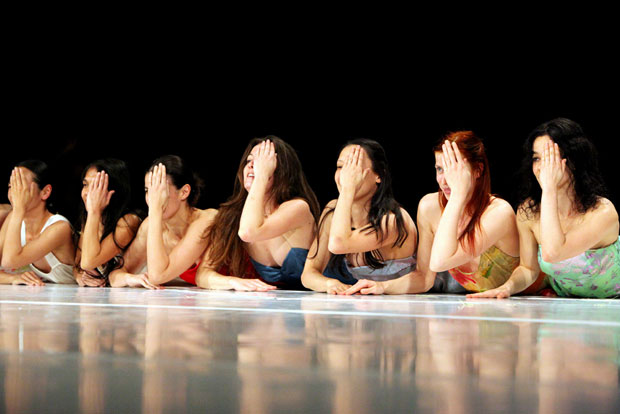
Tanztheater Wuppertal Pina Bausch
World Cities 2012: …como el musguito en la piedra, ay si, si, si…
London, Sadler’s Wells
12 June 2012
www.pina-bausch.de
World Cities 2012 details
DanceTabs reviews of World Cities 2012 performances
I have had some of the best dreams ever while wide awake and watching Tanztheater Wuppertal Pina Bausch. The company conjures imagery that no conscious mind seems capable of assembling. Bausch herself could – or perhaps, more accurately, would – rarely explain the inspiration for her artistic decisions. And, of all the work that she made, ‘…como el musguito en la piedra, ay si, si, si…’ (‘…like moss on a stone, oh yes, yes, yes…’) has a particularly ethereal quality since it was the finale, premiering just over a fortnight before her death in June 2009. The programme – and other reviews of earlier performances in this world cities season – have referred to her passing as being ‘sudden’ but given that she died from complications arising from lung cancer, I suspect that she was very well aware of her precarious hold on mortality while completing this work.
‘Musguito’ (as I shall call it in the self-interest of my word count) was inspired by the history, culture and popular music of Chile during a tour by Tanztheater Wuppertal and the absurdly peculiar title is taken from the lyrics of one of the many songs (‘Volver a Los 17’) that comprise this remarkable composite soundtrack. No less than 25 composers and recording artists are credited. Here, as always in any Bausch production, the evocative choice of music is an integral part of the work’s holistic success.
What is very surprising about ‘musguito’ is that when measured against the darkness in much of Bausch’s repertoire, where demons often lurk in every shadow, this is a surprisingly light – although often reflective and melancholic – piece, in which pure dance is regularly to the fore. If there is a darker side then it wears the cloak of misogyny; an abuse that runs the gamut from the comparatively light-hearted, serial attempts of a seated man to flirt with a succession of women walking by; to the more sinister episode of waterboarding as a man pours the stuff down the throat and over the face of a seated woman dressed only in a slip. The women are mostly wearing long evening gowns and high-heels with their glossy, long hair flowing freely: they could all pass for beautiful catwalk models or in commercials for hair products exclaiming that they’re “worth it” and we would surely believe them. This uniform elegance heightens our sense of their vulnerability.
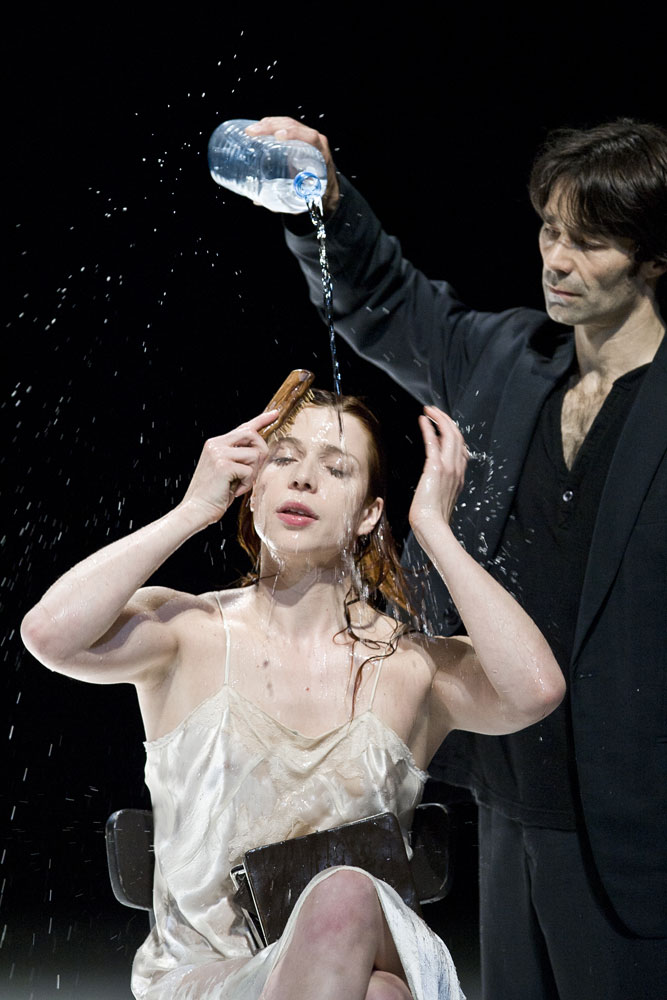
I can’t recall seeing a Bausch production with fewer complications in the set (of course, as ever in the later years, designed by Peter Pabst). A rather large tree is carried on at one point; some corks are propelled by mouth and gathered again; dried grass is ejected from the folds of a woman’s dress; and there are the odd chair or two and sundry sticks and stones. These few props aside, ‘musguito’ is largely performed on a bare stage with visual enhancement coming only in the colourful gowns designed by Marion Cito.
There is plenty of humour and I found myself laughing aloud many times but the very best of ‘musguito’ comes in the dance sections, notably in several periodic solos that punctuate the work. Those performed by the women dancers especially have an organic, free-flowing expressionist style that seemed to reach right back into the roots of Bausch’s early training with Kurt Jooss and the inheritance his teaching gained from the inspiration of Mary Wigman, Dore Hoyer, Hanya Holm and other great German dance-makers of the 20s and 30s.
It was often transfixing in an intoxicating blend of expressionism, abstraction and sensitivity; mixing floating melancholia, cold passion and frenetic energy. The movement in this catalogue of solos seemed always to be precise, finely nuanced and deeply emotional. I have seen no more than a sixth of Bausch’s choreography but – on that minority basis – I believe these dances to be amongst the most moving and inspiring of her output, a fact of course artificially enhanced by the retrospective knowledge of this being its full stop.
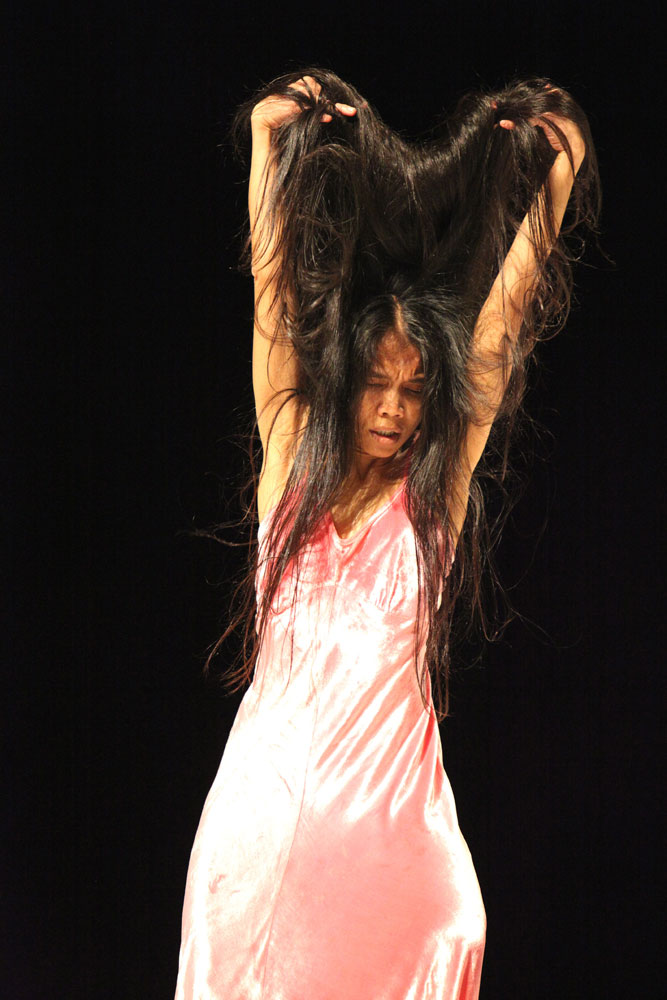
What ‘musguito’ achieves is to remind us that her company are more than charismatic dance actors, mime artists and comedians (which they most certainly are) but that they are also amongst the finest of dancers. It was particularly apposite to see the great Dominique Mercy in a central role, now in his 60s and looking more and more like the actor Charles Dance every time I see him. His own solo was possessed of a pulsating and arresting enthusiasm, such that I can’t tell you whether it lasted 20 seconds or 5 minutes, as time seemed to stand still while he performed. These qualities of dreamy timelessness linked to the streams of indelible images that flow from the stage, hallmark the genius of Tanztheater Wuppertal Pina Bausch. It is especially fitting that this World Cities season is linked to the Olympic Games since like the Olympic Flame; one feels that Bausch will live on forever, her spirit now infused into this living legacy of a whole community that remains dedicated to her art.













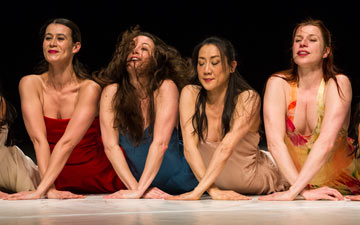
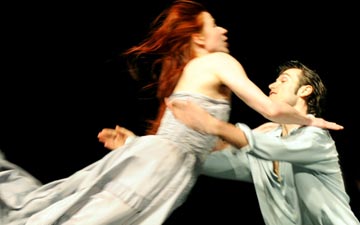
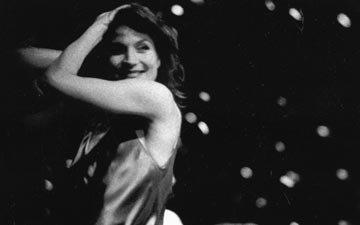
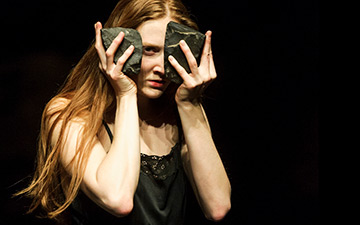
You must be logged in to post a comment.